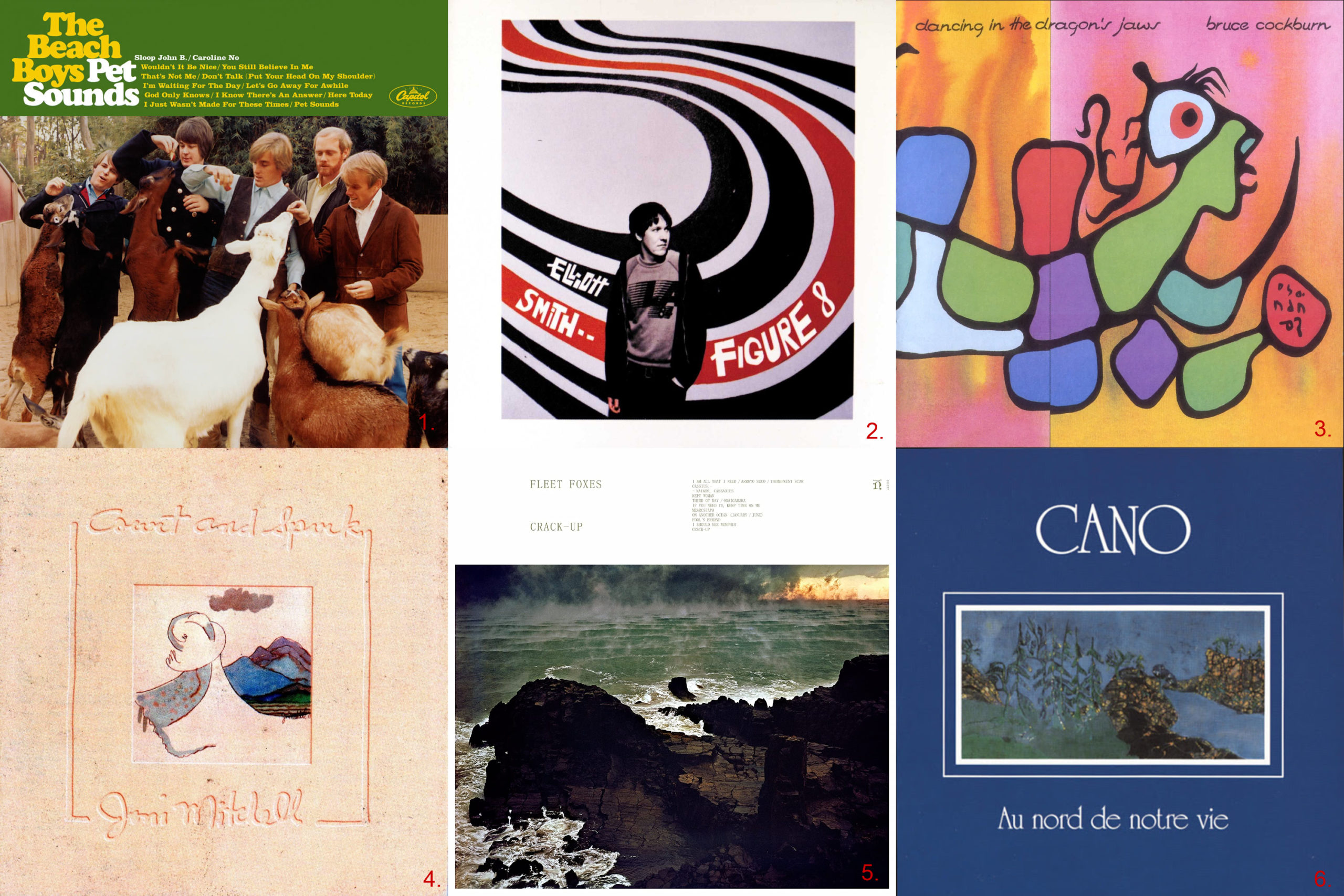Alternative/Rock
Stereo Six: Singer-Songwriter Gareth Inkster Highlights His Foundational Influences

Gareth Inkster is a Hamilton, Ontario-based singer-songwriter who melds traditional elements of indie-folk with provocative harmonic and rhythmic leanings. His February 2020 single, “Used to It” – as touched on in the entries below – is a great example, as it evolved from an interesting “auxiliary, and found percussion-sound.” Pumping singles out at a rapid rate to complement 2018’s release of the eight-track Last Year, Gareth is building momentum to launch him into a promising future.
In an effort to pay tribute to the artists who helped him get here, Gareth joins us for this Stereo Six entry to list the albums that have had the most prominent influence on his musical trajectory. From the sonically discernable choice (Elliott Smith) to the completely obscure (CANO), these albums help flesh out the musical education of this accomplished young songwriter.
1. The Beach Boys – Pet Sounds (1966, Capitol Records – Spotify)
I don’t deny being a little bit bashful putting this one on the list. This album has been lauded by so many, for so long, and to such a degree that it’s become something of a cliche to praise it at all. At the end of the day though, it’s just so good. This album truly is a masterpiece of harmony, with melodic ingenuity and arrangements to rival the best there ever were. And all of that is just insane when you consider that Brian Wilson was 23 – 24 when it was written and recorded. It’s just incredible.
2. Elliott Smith – Figure 8 (2000, Dreamworks Records – Spotify)
I knew Elliott was going to be on this list, but it was a toss-up for me between this album or XO. They’re both impossibly strong. I went with this one because it was my introduction to him, and it holds that special place in my heart. Similar to my love for Pet Sounds, this album has such a unique harmonic fingerprint, and the beautiful melodies serve as a through-line, tying his wonderfully colourful and unintuitive chordal changes together.
3. Bruce Cockburn – Dancing in the Dragon’s Jaws (1979, True North Records – Spofity)
I’m a huge Cockburn fan. Growing up we would listen to his late ‘70s albums as a family while driving up to Manitoulin Island. For at least this reason (though I’m sure his being Canadian helps too), his music has taken on a potent flavour which seems to really complement the varied, lush and expansive landscape of Northern Ontario. In addition, the arrangements, lyrics, and (surprise surprise) the harmonic subtlety of this album really speaks my emotional language.
4. Joni Mitchell – Court and Spark (1974, Asylum – Spotify)
Joni is just the best. When I was a kid, her best-of CD was kicking around, and I used to listen to “Help Me” over and over. I didn’t have the ears or the language at the time to understand why the chord changes were affecting me so much. After some music schooling and plenty of my own practice and growth as a player and writer, I came to really understand just why this album was always so good to me. She essentially made a pop/jazz/folk/rock and roll album. Her lyrics are entirely unique and profound, to boot.
5. Fleet Foxes – Crack-Up (2017, Nonesuch Records – Spotify)
I’ve been a Robin Pecknold fan for a long time now. Their self-titled record was one of the only CDs I had in my car when I got my driver’s license, and I listened to it non-stop. Helplessness Blues picked up where that one left off, and I loved it too. When Crack-Up came out, I really couldn’t believe it. Somehow Pecknold had managed to create an album that felt like a suite of 200 years ago. I don’t mean in any technical compositional form sort of way, just in the way that the whole album had this distinct and composite wholeness. Many of the songs, by contrast, lacked a conventional, insular, well-defined structure (verse-chorus, verse-chorus, bridge-chorus). This departure from the norm takes away from the songs’ autonomous identities, but – largely because of the arranging – lends a greater sense of belonging and identity to the album writ large.
6. CANO – Au Nord du Notre Vie (1977, A&M Records – Spotify)
I only discovered this Record last spring, but it’s already become one of my most-listened-to, according to Spotify. CANO was the product of an independent artists’ co-op in Sudbury, Ontario back in the late ‘70s/early ‘80s. My dad was tight with the pianist at the time, otherwise, I’m sure I’d never have heard of them. This album is so good. At seven songs, it’s a short tracklist, but two of them are over ten minutes long and consist of themes and movements and stuff. It’s really creative music throughout, too. It’s sad, but I wonder if this group would have garnered more acclaim if they had sung primarily in English. Their bizarre cover of “Frère Jacques” really unlocked my latest single (“Used to It”), actually. I wasn’t sure what the feel would be, but I decided to try my hand at auxiliary, found-percussion sounds like they did. It worked.
-

 Music4 days ago
Music4 days agoTake That (w/ Olly Murs) Kick Off Four-Night Leeds Stint with Hit-Laden Spectacular [Photos]
-

 Alternative/Rock5 days ago
Alternative/Rock5 days agoThe V13 Fix #010 w/ High on Fire, NOFX, My Dying Bride and more
-

 Hardcore/Punk2 weeks ago
Hardcore/Punk2 weeks agoHastings Beat Punks Kid Kapichi Vent Their Frustrations at Leeds Beckett University [Photos]
-

 Culture2 weeks ago
Culture2 weeks agoCirque Du Soleil OVO Takes Leeds Fans on a Unique, Unforgettable Journey [Photos]
-

 Alternative/Rock2 weeks ago
Alternative/Rock2 weeks agoA Rejuvenated Dream State are ‘Still Dreaming’ as They Bounce Into Manchester YES [Photos]
-

 Features4 days ago
Features4 days agoTour Diary: Gen & The Degenerates Party Their Way Across America
-

 Culture6 days ago
Culture6 days agoDan Carter & George Miller Chat Foodinati Live, Heavy Metal Charities and Pre-Gig Meals
-

 Music6 days ago
Music6 days agoReclusive Producer Stumbleine Premieres Beat-Driven New Single “Cinderhaze”
















